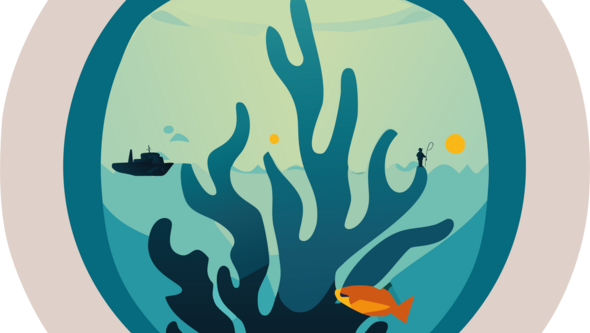Sustainable development goals: MARINE AND COASTAL BIODIVERSITY
Seventy percent of our planet is covered by sea. More than three billion people depend on marine and coastal biodiversity. The sea plays a crucial role in the effects of climate change.
Seventy percent of our planet is covered by sea. More than three billion people depend on marine and coastal biodiversity. The sea plays a crucial role in the effects of climate change.

More and more people are discovering the potential of the sea, while at the same time marine ecosystems are becoming increasingly fragile. The blue economy includes everything from fishing, aquaculture, tourism, fish farming and energy to maritime transport. But how can these industries operate sustainably? The Co-Creating Better Blue research programme is working to create a sustainable blue economy for Sweden, and to ensure cooperation for more sustainable, open and democratic use of the sea. The programme includes a large number of marine actors from every section of society: 13 research organisations and 25 actors from industry, government agencies and civil society.
Microalgae are widely seen as a promising sustainable raw material, with applications within energy, feedstuffs, fertilisers, food and cosmetics. The Swedish Algae Factory, which was established by researcher Angela Wulff at the Department of Biological and Environmental Sciences, cultivates diatoms and extracts their silica shells. The diatom’s shell has the ability to absorb light, protect against UV radiation, and retain water in the diatom cell. The material is produced sustainably, and also replaces harmful chemicals in products. The end-material can be used, for example, to improve the efficiency of solar cells in solar panels and as a moisturising ingredient in skincare products.
Much of the world’s kelp forests have been lost over the course of the last 50 years. Large kelp, Laminaria hyperborea, can grow several metres high and is found in cold seas all over the world. Kelp forests are a vital part of functioning marine ecosystems. The provide important nursery environments for many species, and they also act as nitrogen and carbon sinks. One of the reasons for their decline is human impact on the environment. As part of the ‘Restoration of kelp, Laminaria hyperborea’ research project, researchers are inventorying previously known sites with large kelp. They are also developing methods for replanting kelp forests that are better at coping with environmental changes.
Text: Linnéa Magnusson
Illustration: Erika Hoff